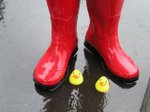 Oh, but I do wish A.S. Byatt and Margaret Drabble would settle that petty spat about the tea set. You see, they'd have so much to talk about. I just finished reading Drabble's latest book The Pattern in the Carpet, whose reviewer in The Telegraph was quite correct with "What a puzzle: Margaret Drabble’s memoir cum history of the jigsaw cum paean to her rather dull aunt shouldn’t really work. But somehow, in the end, it seduces." It did. I'd also listened to the Guardian podcast of an excerpt from the beginning of the book, and so the whole of the book I read in her voice.
Oh, but I do wish A.S. Byatt and Margaret Drabble would settle that petty spat about the tea set. You see, they'd have so much to talk about. I just finished reading Drabble's latest book The Pattern in the Carpet, whose reviewer in The Telegraph was quite correct with "What a puzzle: Margaret Drabble’s memoir cum history of the jigsaw cum paean to her rather dull aunt shouldn’t really work. But somehow, in the end, it seduces." It did. I'd also listened to the Guardian podcast of an excerpt from the beginning of the book, and so the whole of the book I read in her voice.It was a very strange book, the kind they don't let you write unless you've been publishing for nearly fifty years and they indulge you. Such permissiveness a good thing, because the book is fascinating. (I'm not sure it will come out in Canada. It is a very English book. Estimates of a limited audience here might be correct, but then again they may not be). The book, of course, is a puzzle in itself (though if I were English, I'd call it a "jigsaw"), made up of memoir, family history, and the history of the jigsaw puzzle. Which comes to encompass a history of games, of amusements and pastimes. (And why does pastime not have two s's, I wonder, but anyway...) Also a history of childhood, and children's literature too. Told most unsentimentally, and Drabble admits she's never had much of an interest in childhood, or explored it in her fiction. But she's looking backwards now, in light of her own age and her husband's illness, perhaps because, she admits, she dreads of looking forward.
But The Pattern in the Carpet is hardly a personal indulgence. Drabble was indulged instead in being permitted to publish a book that "shouldn't work", whose pieces do not fit together neatly, and together form a whole that is quite difficult to explain/contain. Entire chapters as digressions, anecdotes fitted in for no other reason than that they're interesting, moving from jigsaws to mosaics, to the city as a jigsaw, production and marketing of children's games, and reconstruction of ruins, and the "Teas with Hovis" cups and saucers from her auntie's bed and breakfast. Something called a warming pan, and how Drabble's mother liked electric blankets, but for Drabble herself the novelty wore off and she sticks with hot water bottles now.
I loved it. Now I'm pretty partial to Margaret Drabble anyway, and have readily embraced her admittedly strange more recent novels that might have put her long-time readers off. But I suspect these readers will find the new book appealing as well, even if they lack interest in the subject matter (and I really couldn't have cared less about jigsaw puzzles before this book. Now I'm just a little bit inspired). The book is a veritable curiosity shop, scattered with sharp thinking, wonderful questions, and Drabble's meticulous prose.
But yes, she needs to talk to her sister. Byatt also has a new book out, The Children's Book, which I was resisting. I don't love A.S. with the same lack of reserve with which I love Drabble, plus The Children's Book is 600+ pages and I'm having a baby in a week and a half. The book might just be heavier than the baby, but then I read this review at Dovegreyreader Scribbles, and more thoughts upon the novel over at Crooked House. And now I simply must have it, baby or not. Particularly because of how it relates to The Pattern in the Carpet, to childhood as an invention and its literature. I'm looking forward to it. And maternity leave pre-baby has brought on the return of my ability to focus, and so this whole "reading" idea is not as idiotic as it might seem in the time being.

